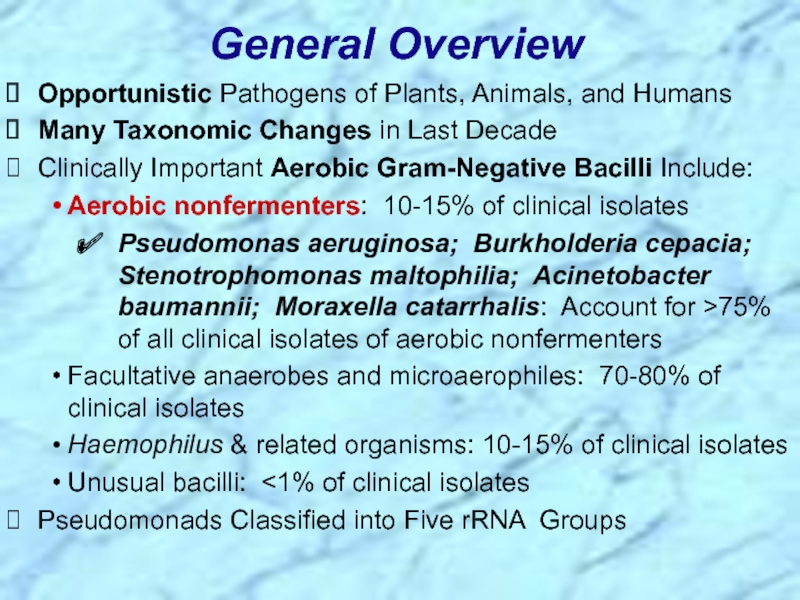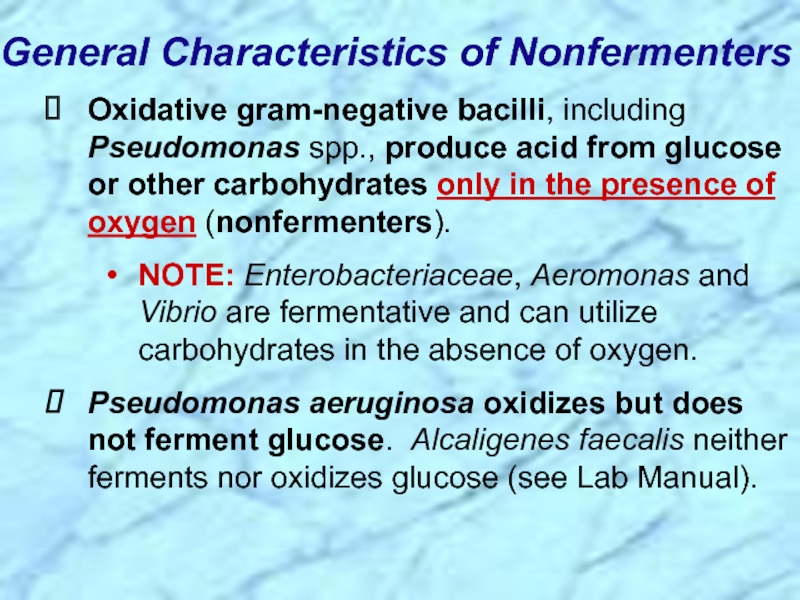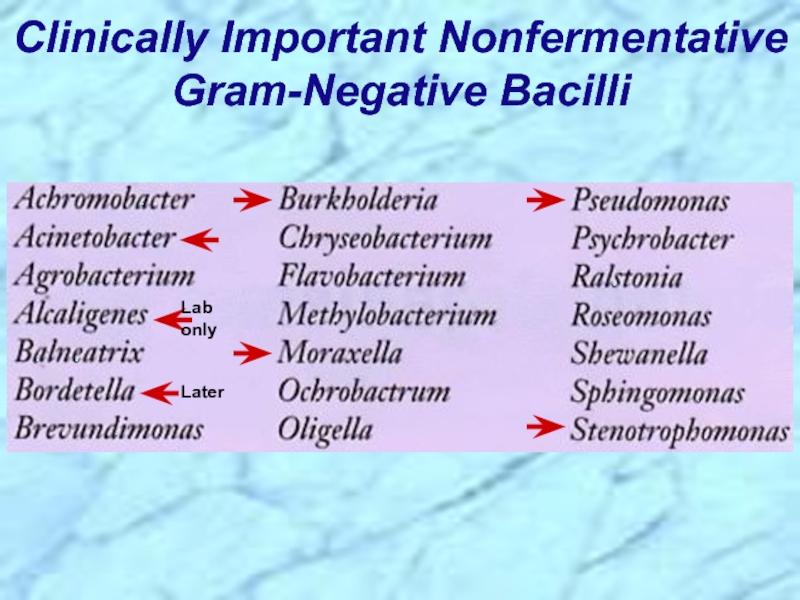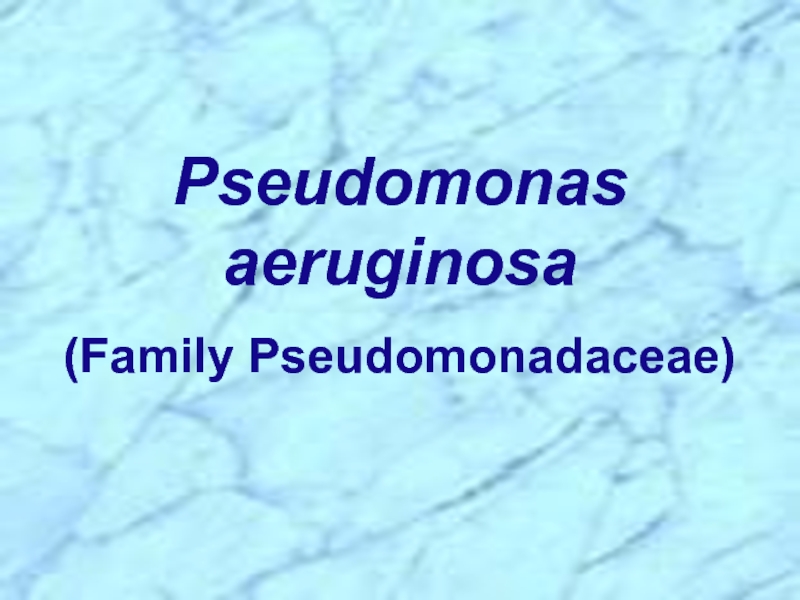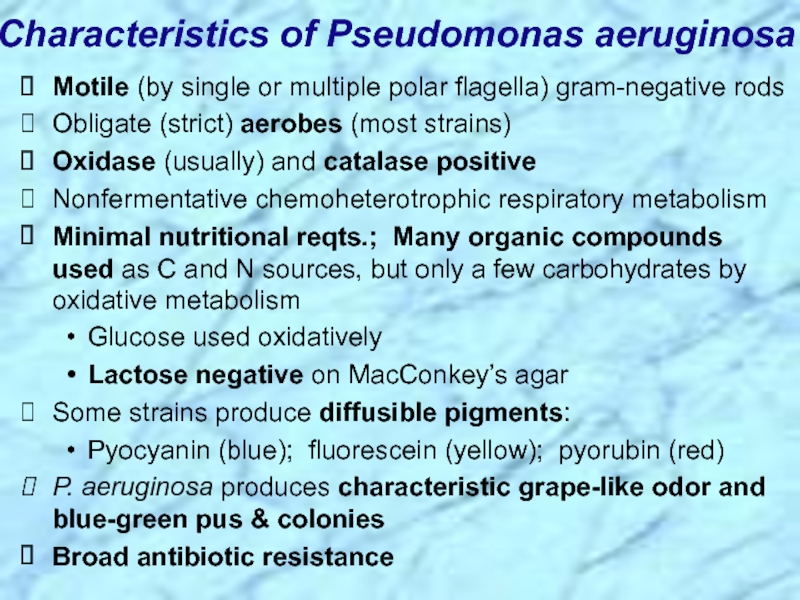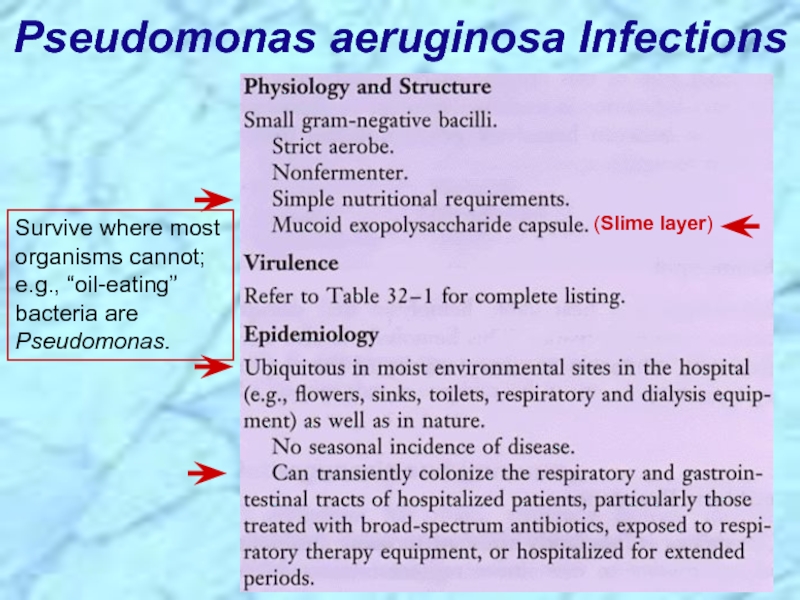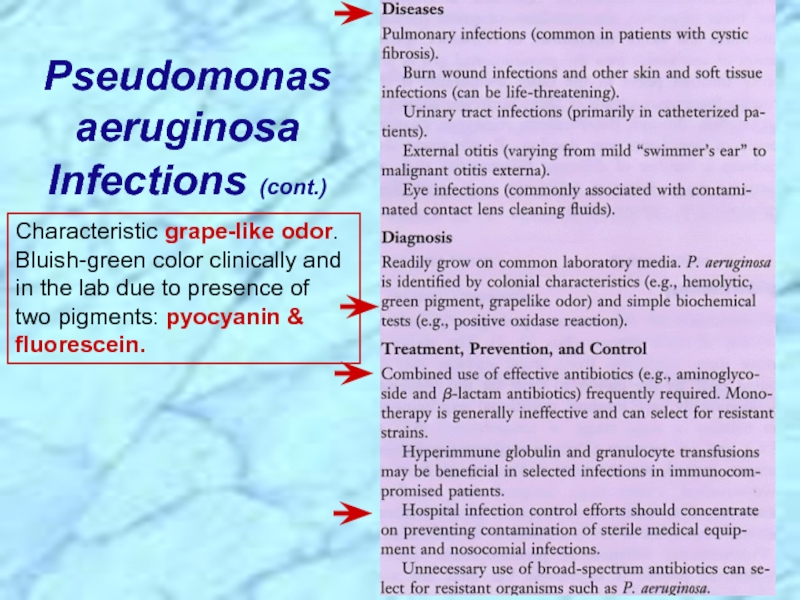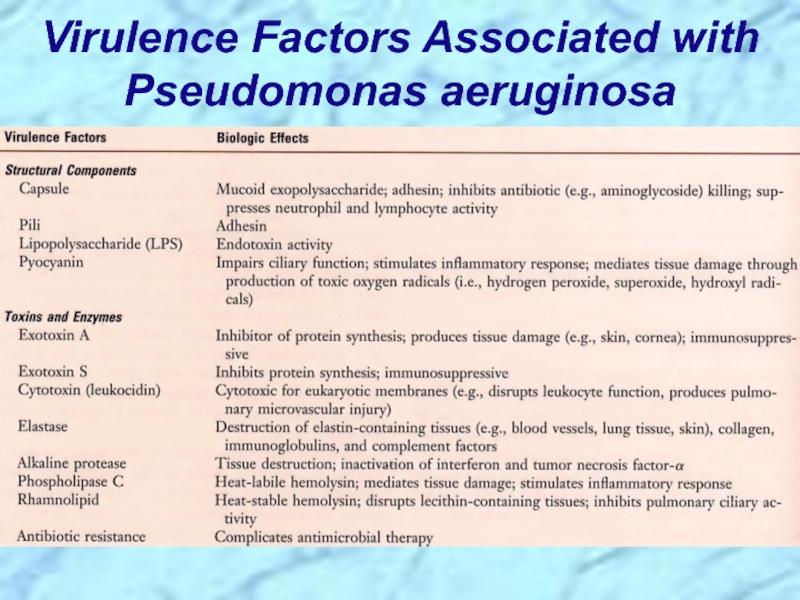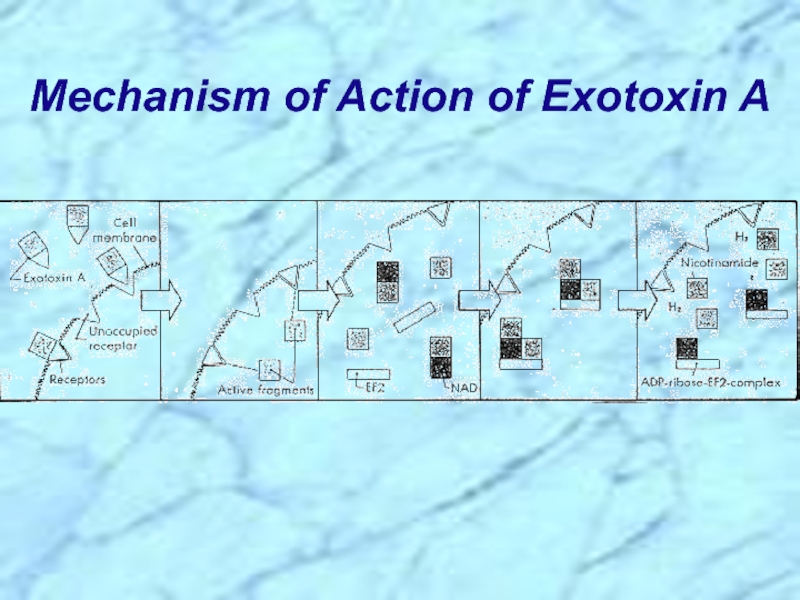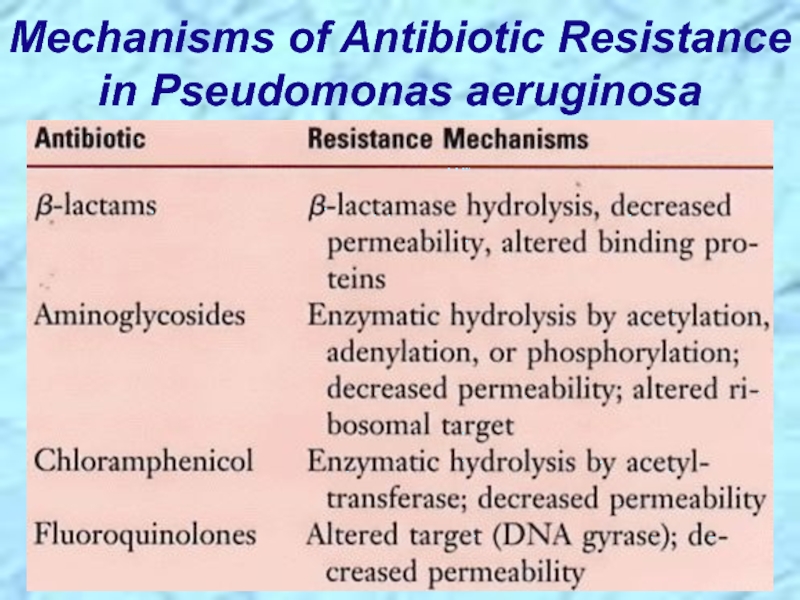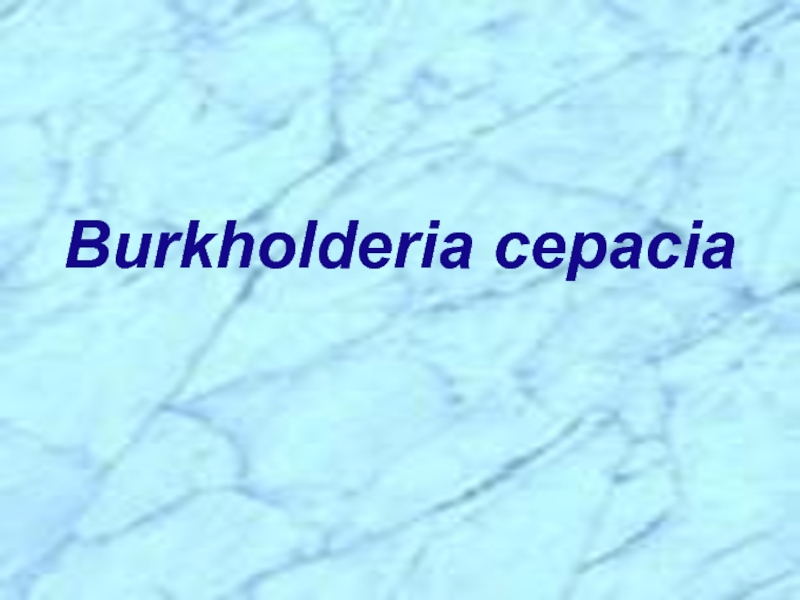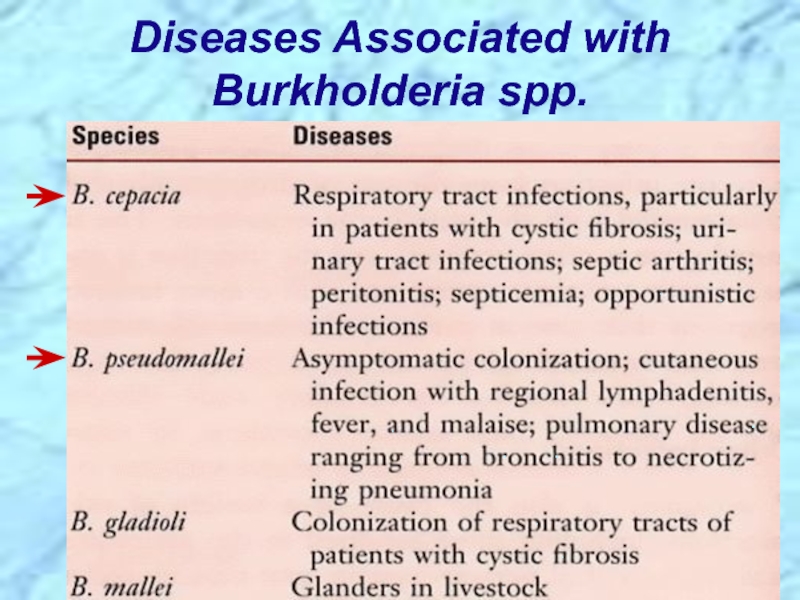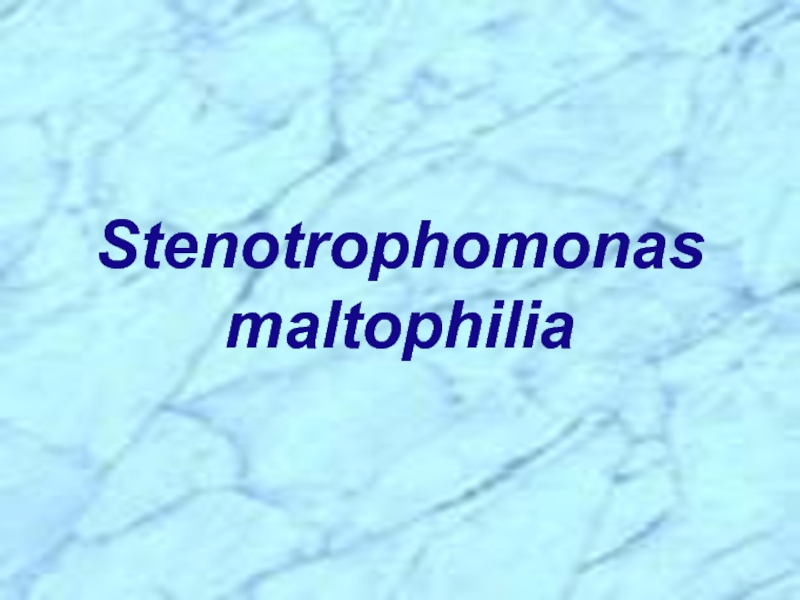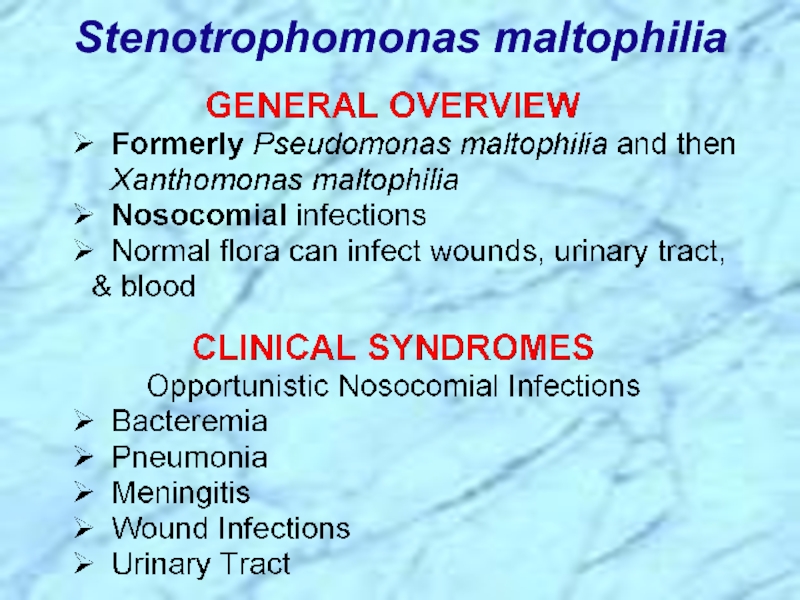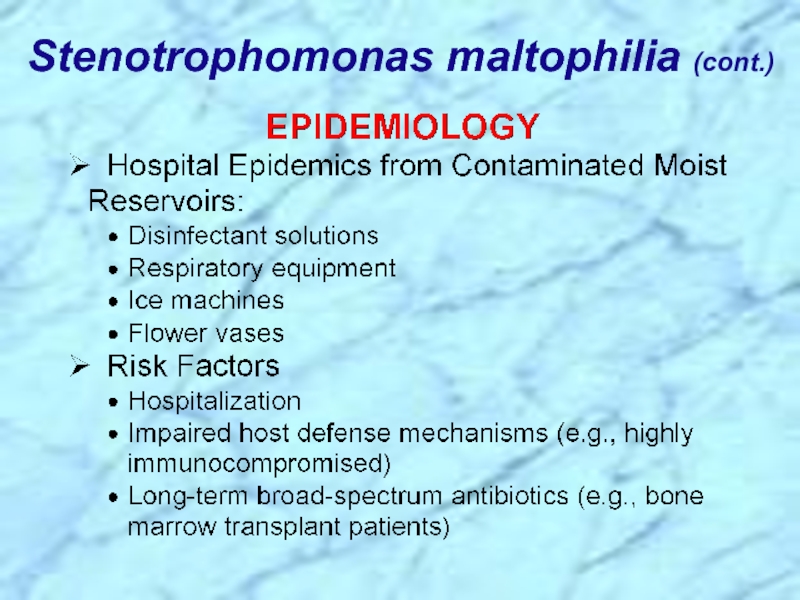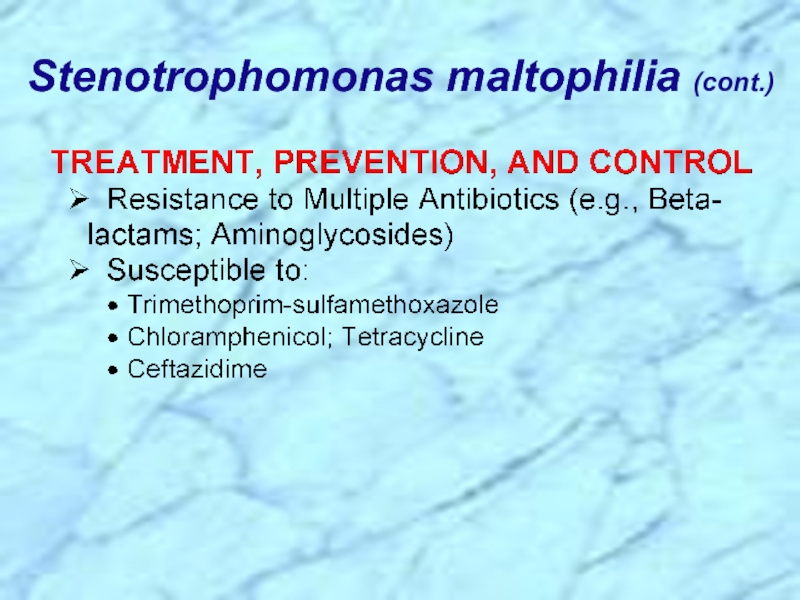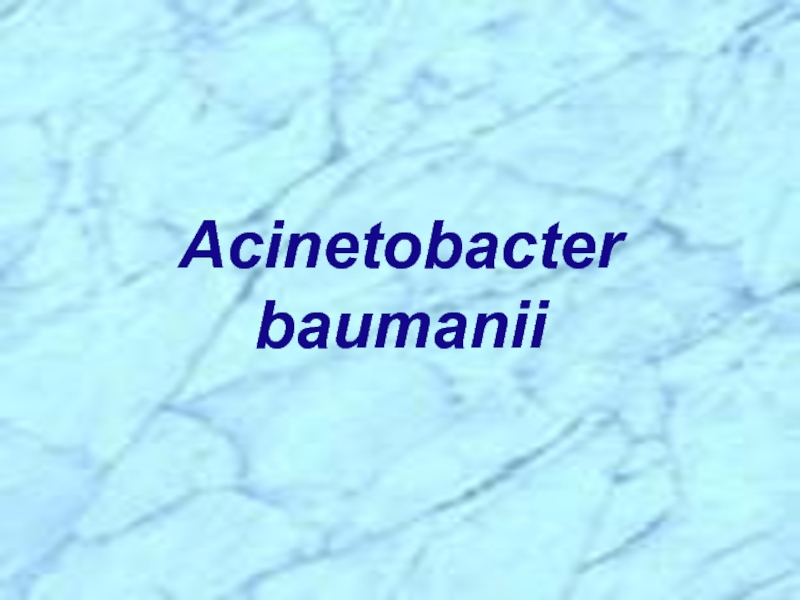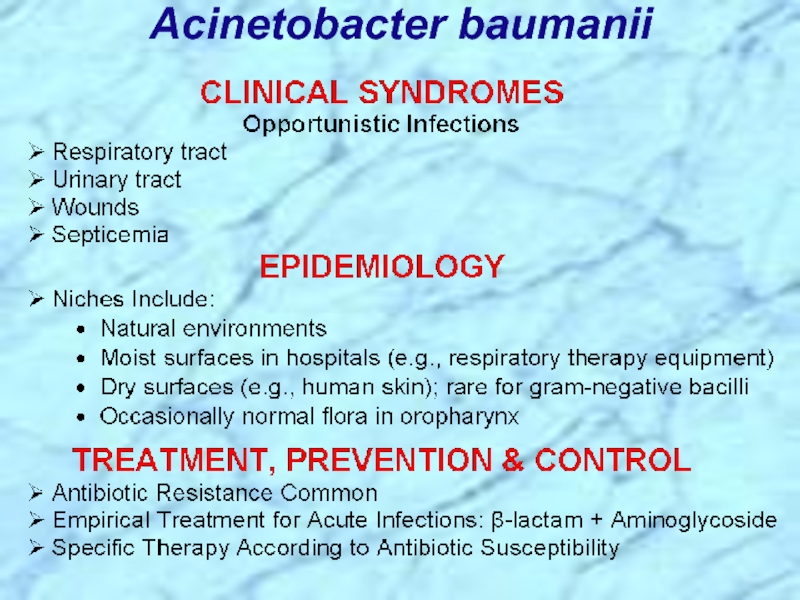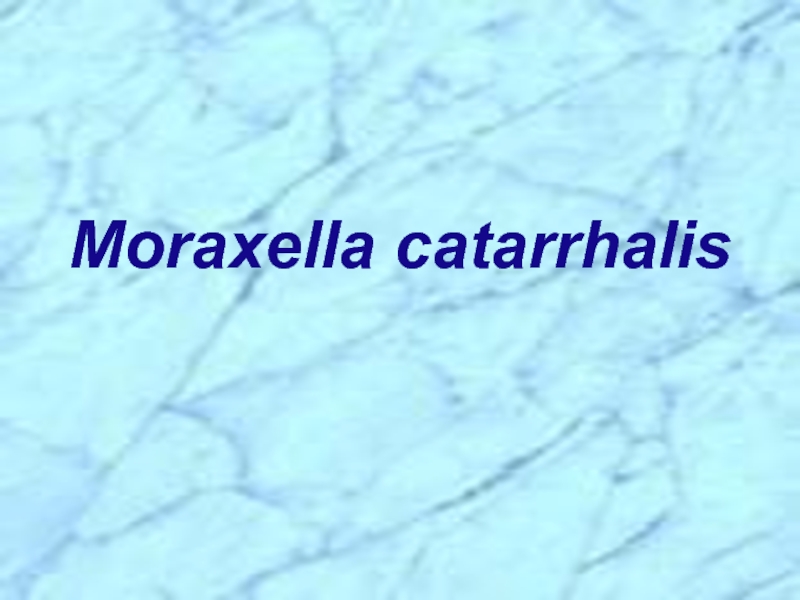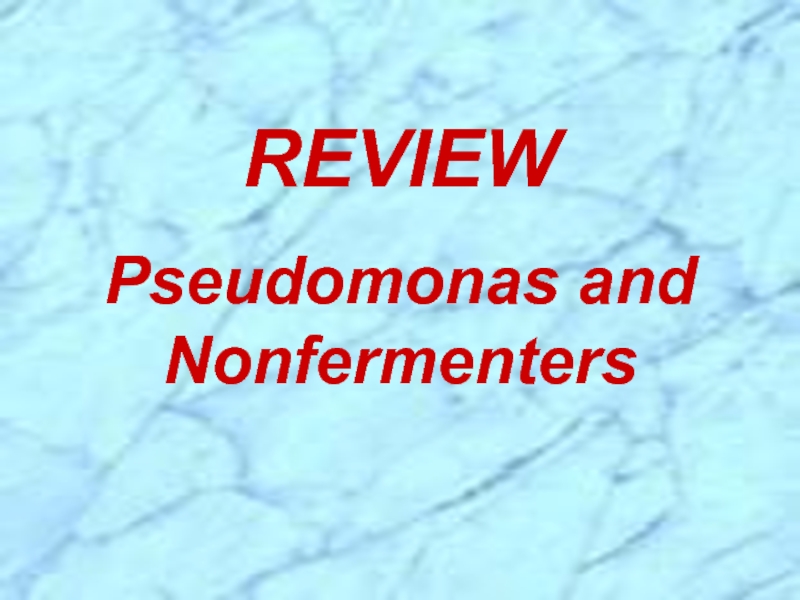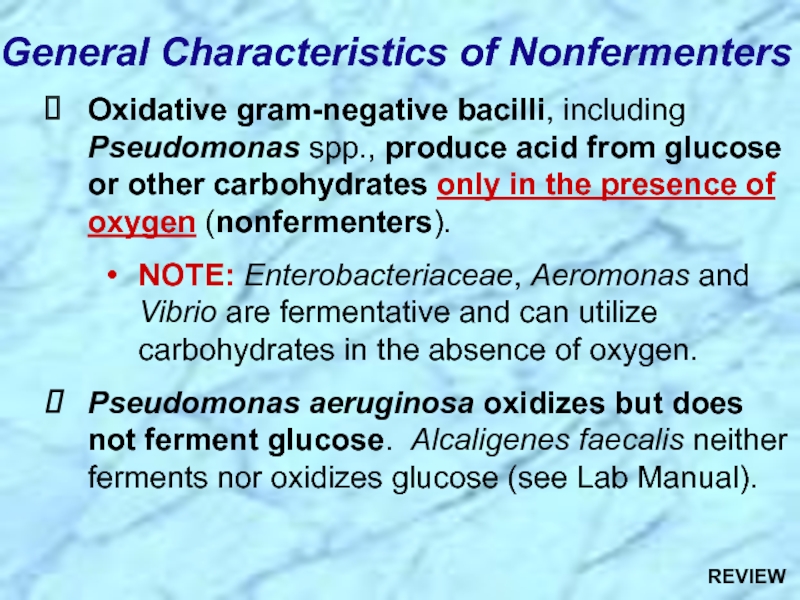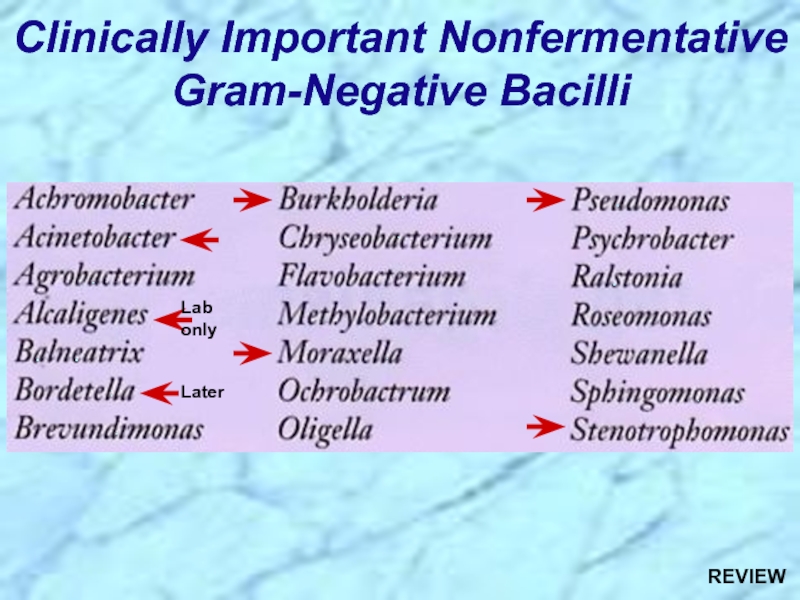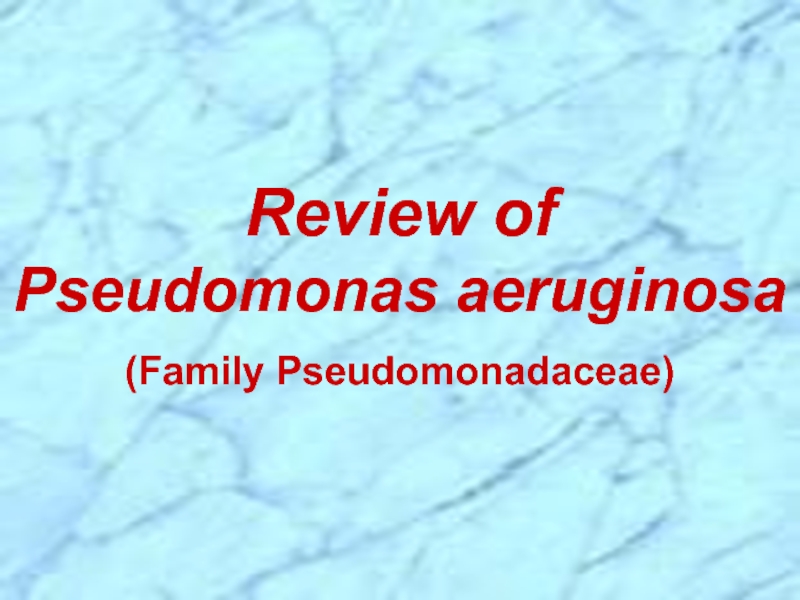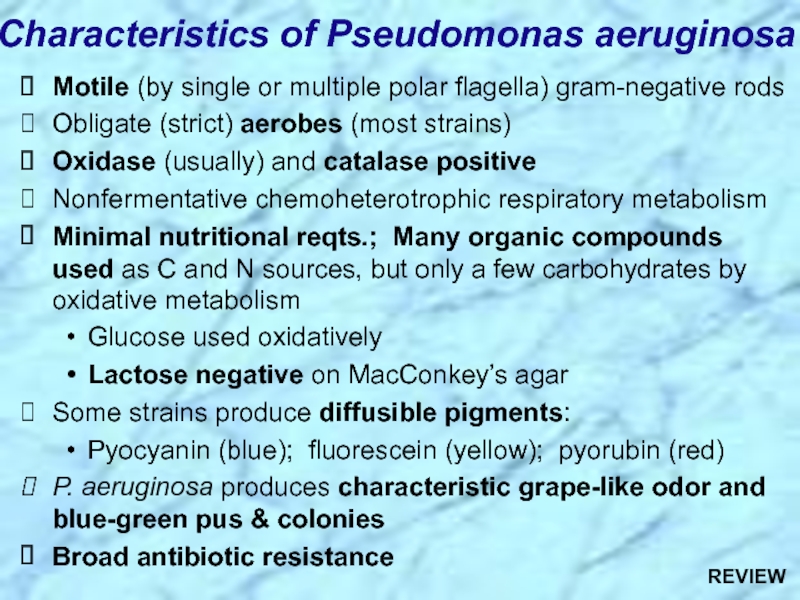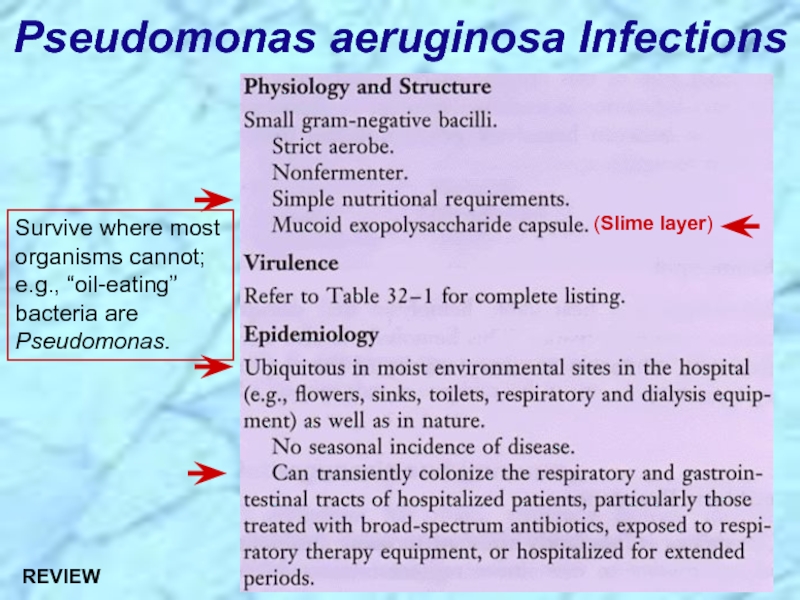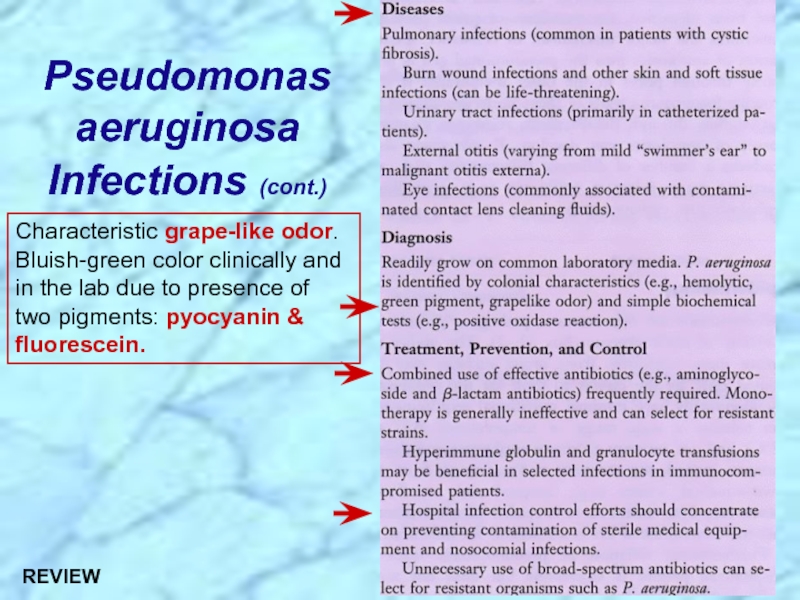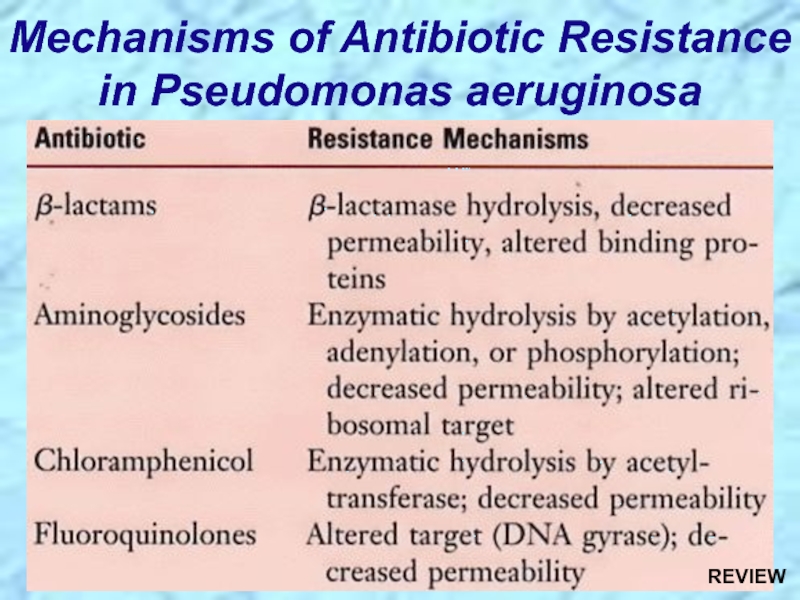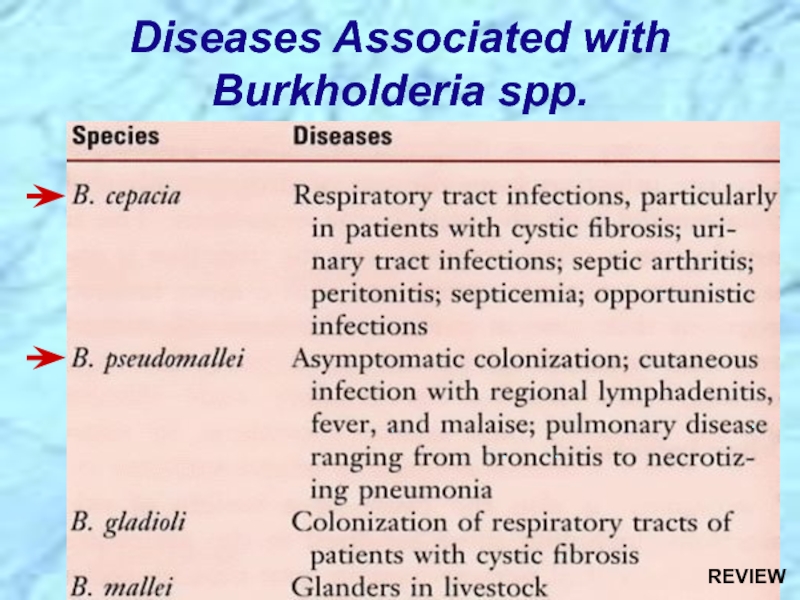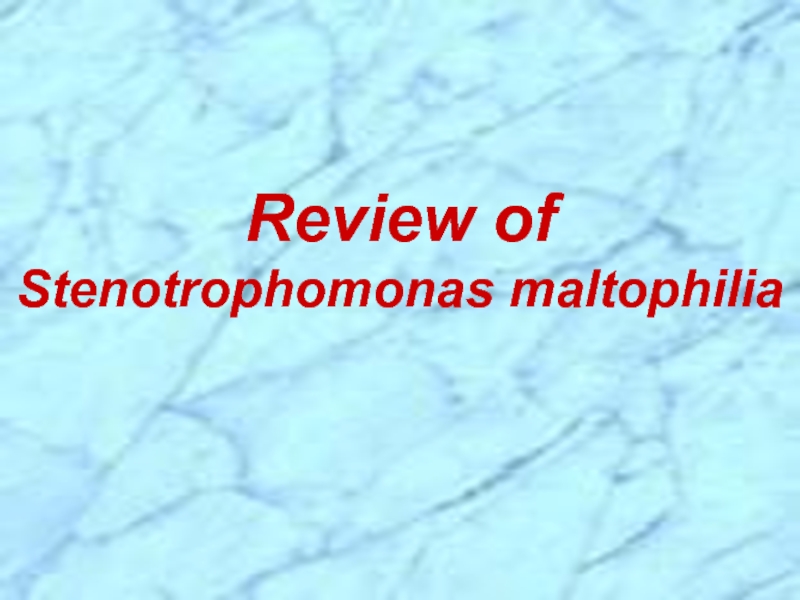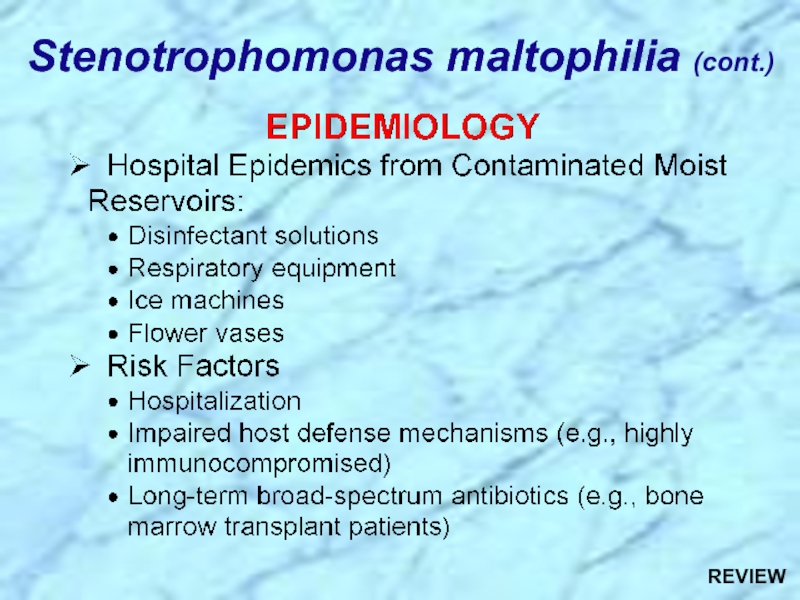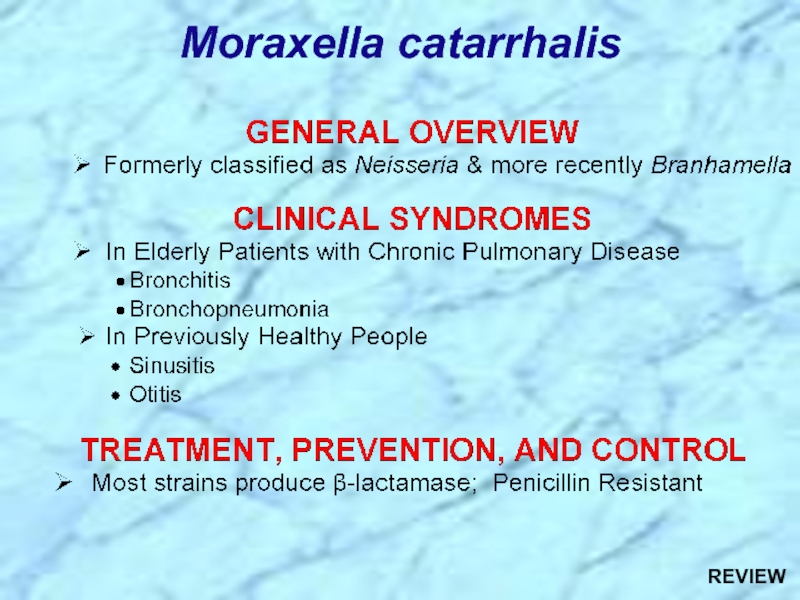- Главная
- Разное
- Дизайн
- Бизнес и предпринимательство
- Аналитика
- Образование
- Развлечения
- Красота и здоровье
- Финансы
- Государство
- Путешествия
- Спорт
- Недвижимость
- Армия
- Графика
- Культурология
- Еда и кулинария
- Лингвистика
- Английский язык
- Астрономия
- Алгебра
- Биология
- География
- Детские презентации
- Информатика
- История
- Литература
- Маркетинг
- Математика
- Медицина
- Менеджмент
- Музыка
- МХК
- Немецкий язык
- ОБЖ
- Обществознание
- Окружающий мир
- Педагогика
- Русский язык
- Технология
- Физика
- Философия
- Химия
- Шаблоны, картинки для презентаций
- Экология
- Экономика
- Юриспруденция
Pseudomonas and Nonfermenters презентация
Содержание
- 2. Pseudomonas and Nonfermenters
- 3. Opportunistic Pathogens of Plants, Animals, and Humans
- 4. General Characteristics of Nonfermenters Oxidative gram-negative bacilli,
- 5. Clinically Important Nonfermentative Gram-Negative Bacilli Later Lab only
- 7. Pseudomonas aeruginosa (Family Pseudomonadaceae)
- 8. Motile (by single or multiple polar flagella)
- 9. Pseudomonas aeruginosa Infections
- 10. Pseudomonas aeruginosa Infections (cont.) Characteristic grape-like odor.
- 11. Virulence Factors Associated with Pseudomonas aeruginosa
- 12. Mechanism of Action of Exotoxin A
- 13. Mechanisms of Antibiotic Resistance in Pseudomonas aeruginosa
- 15. Burkholderia cepacia
- 16. Diseases Associated with Burkholderia spp.
- 17. Stenotrophomonas maltophilia
- 18. Stenotrophomonas maltophilia
- 19. Stenotrophomonas maltophilia (cont.)
- 20. Stenotrophomonas maltophilia (cont.)
- 21. Acinetobacter baumanii
- 22. Acinetobacter baumanii
- 23. Moraxella catarrhalis
- 24. Moraxella catarrhalis
- 26. REVIEW Pseudomonas and Nonfermenters
- 27. General Characteristics of Nonfermenters Oxidative gram-negative bacilli,
- 28. Clinically Important Nonfermentative Gram-Negative Bacilli Later Lab only REVIEW
- 29. Review of Pseudomonas aeruginosa (Family Pseudomonadaceae)
- 30. Motile (by single or multiple polar flagella)
- 31. Pseudomonas aeruginosa Infections REVIEW
- 32. Pseudomonas aeruginosa Infections (cont.) Characteristic grape-like odor.
- 33. Virulence Factors Associated with Pseudomonas aeruginosa REVIEW
- 34. Mechanism of Action of Exotoxin A REVIEW
- 35. Mechanisms of Antibiotic Resistance in Pseudomonas aeruginosa REVIEW
- 36. Review of Burkholderia cepacia
- 37. Diseases Associated with Burkholderia spp. REVIEW
- 38. Review of Stenotrophomonas maltophilia
- 39. Stenotrophomonas maltophilia (cont.) REVIEW
- 40. Review of Acinetobacter baumanii
- 41. Acinetobacter baumanii REVIEW
- 42. Review of Moraxella catarrhalis
- 43. Moraxella catarrhalis REVIEW
Слайд 3Opportunistic Pathogens of Plants, Animals, and Humans
Many Taxonomic Changes in
Clinically Important Aerobic Gram-Negative Bacilli Include:
Aerobic nonfermenters: 10-15% of clinical isolates
Pseudomonas aeruginosa; Burkholderia cepacia; Stenotrophomonas maltophilia; Acinetobacter baumannii; Moraxella catarrhalis: Account for >75% of all clinical isolates of aerobic nonfermenters
Facultative anaerobes and microaerophiles: 70-80% of clinical isolates
Haemophilus & related organisms: 10-15% of clinical isolates
Unusual bacilli: <1% of clinical isolates
Pseudomonads Classified into Five rRNA Groups
General Overview
Слайд 4General Characteristics of Nonfermenters
Oxidative gram-negative bacilli, including Pseudomonas spp., produce acid
NOTE: Enterobacteriaceae, Aeromonas and Vibrio are fermentative and can utilize carbohydrates in the absence of oxygen.
Pseudomonas aeruginosa oxidizes but does not ferment glucose. Alcaligenes faecalis neither ferments nor oxidizes glucose (see Lab Manual).
Слайд 8Motile (by single or multiple polar flagella) gram-negative rods
Obligate (strict)
Oxidase (usually) and catalase positive
Nonfermentative chemoheterotrophic respiratory metabolism
Minimal nutritional reqts.; Many organic compounds used as C and N sources, but only a few carbohydrates by oxidative metabolism
Glucose used oxidatively
Lactose negative on MacConkey’s agar
Some strains produce diffusible pigments:
Pyocyanin (blue); fluorescein (yellow); pyorubin (red)
P. aeruginosa produces characteristic grape-like odor and blue-green pus & colonies
Broad antibiotic resistance
Characteristics of Pseudomonas aeruginosa
Слайд 10Pseudomonas aeruginosa Infections (cont.)
Characteristic grape-like odor. Bluish-green color clinically and in
Слайд 27General Characteristics of Nonfermenters
Oxidative gram-negative bacilli, including Pseudomonas spp., produce acid
NOTE: Enterobacteriaceae, Aeromonas and Vibrio are fermentative and can utilize carbohydrates in the absence of oxygen.
Pseudomonas aeruginosa oxidizes but does not ferment glucose. Alcaligenes faecalis neither ferments nor oxidizes glucose (see Lab Manual).
REVIEW
Слайд 30Motile (by single or multiple polar flagella) gram-negative rods
Obligate (strict)
Oxidase (usually) and catalase positive
Nonfermentative chemoheterotrophic respiratory metabolism
Minimal nutritional reqts.; Many organic compounds used as C and N sources, but only a few carbohydrates by oxidative metabolism
Glucose used oxidatively
Lactose negative on MacConkey’s agar
Some strains produce diffusible pigments:
Pyocyanin (blue); fluorescein (yellow); pyorubin (red)
P. aeruginosa produces characteristic grape-like odor and blue-green pus & colonies
Broad antibiotic resistance
Characteristics of Pseudomonas aeruginosa
REVIEW
Слайд 32Pseudomonas aeruginosa Infections (cont.)
Characteristic grape-like odor. Bluish-green color clinically and in
REVIEW


